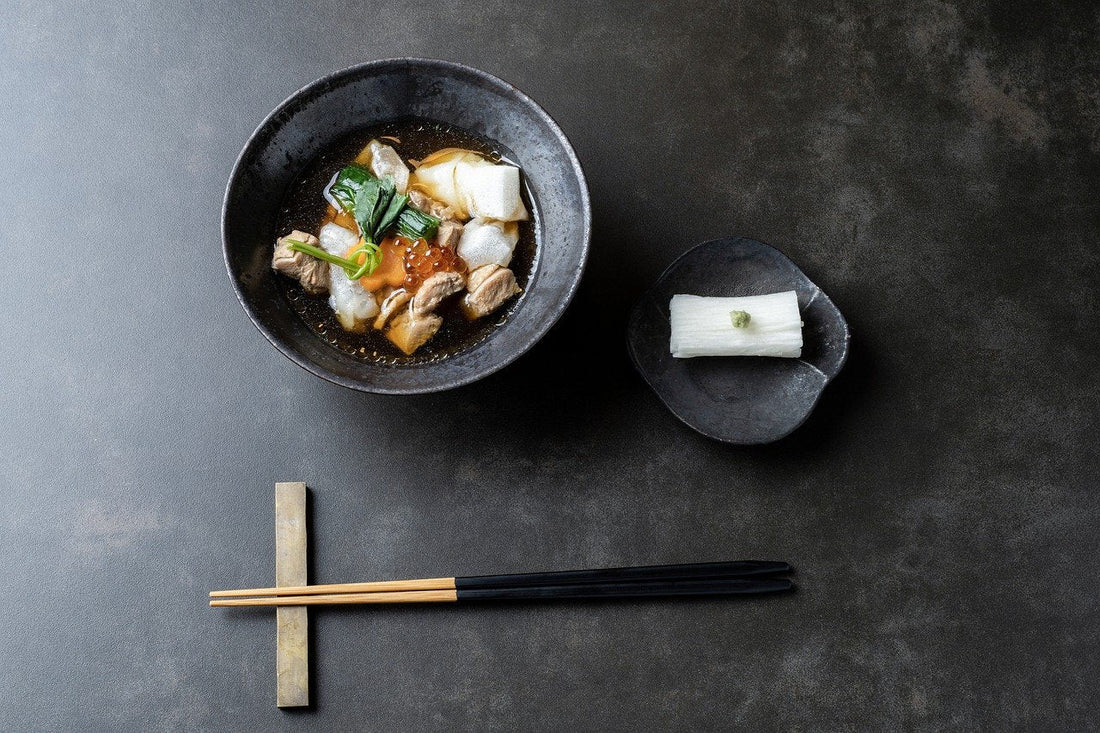
5 Must-Have Japanese Kitchen Tools for Every Home Chef
Share
Elevate Your Cooking with Authentic Japanese Tools
Japanese cuisine is known for its precision, balance, and deep respect for ingredients. To achieve the best results, using the right tools is essential. Whether you are an experienced cook or just beginning to explore Japanese cooking, these five must-have kitchen tools will enhance your culinary experience and help you create authentic Japanese dishes with ease.
1. Japanese Knives (包丁 – Hōchō)
A high-quality Japanese knife is a game-changer in any kitchen. Known for their sharpness and precision, Japanese knives are crafted to make delicate, clean cuts, preserving the texture and integrity of ingredients.
-
Types of Japanese Knives:
- Gyuto (牛刀) – A versatile chef’s knife for slicing meat, fish, and vegetables.
- Santoku (三徳包丁) – A general-purpose knife, great for chopping, dicing, and slicing.
- Yanagiba (柳刃包丁) – A long, slender knife designed for slicing sashimi and sushi.
A well-maintained Japanese knife ensures efficiency and elegance in the kitchen. Regular sharpening with a whetstone helps maintain its sharp edge.
2. Donabe (土鍋 – Japanese Clay Pot)
A donabe is a traditional Japanese clay pot that retains and distributes heat evenly, making it perfect for simmering and slow cooking.
-
Best Uses:
- Hot pots (nabe) like sukiyaki and shabu-shabu.
- Rice cooking for enhanced flavor and texture.
- Simmered dishes such as stews and soups.
Made from natural clay, donabe enhances the depth of flavors, creating warm, comforting meals. It is a must-have for those who love Japanese home cooking.
3. Bamboo Sushi Mat (巻きす – Makisu)
A makisu is a simple yet essential tool for making perfect sushi rolls at home. Made of bamboo sticks bound with cotton string, it helps shape sushi rolls with precision.
-
Best Uses:
- Rolling sushi (maki-zushi) with ease.
- Shaping tamagoyaki (Japanese rolled omelet).
- Squeezing excess moisture out of ingredients.
Makisu is lightweight, easy to clean, and a great tool for anyone looking to master the art of sushi-making at home.
4. Oroshigane (おろし金 – Japanese Grater)
Unlike Western graters, the oroshigane is a fine-toothed grater that produces a smooth, delicate paste rather than rough shreds. This enhances the flavor and texture of fresh ingredients.
-
Best Uses:
- Grating fresh wasabi, ginger, or daikon radish.
- Preparing yuzu zest for garnishes.
- Creating smooth garlic paste for sauces and marinades.
A high-quality oroshigane, often made of copper or ceramic, is an essential tool for elevating the flavors in Japanese dishes.
5. Chopsticks for Cooking (菜箸 – Saibashi)
Unlike regular dining chopsticks, saibashi are long chopsticks specifically designed for cooking. They provide better control and precision when handling delicate ingredients.
-
Best Uses:
- Stirring and flipping ingredients while frying.
- Plating food with precision.
- Handling hot ingredients without getting too close to the heat.
Made from bamboo or wood, saibashi is lightweight and heat-resistant, making them an indispensable tool in any kitchen.
Conclusion
Japanese kitchen tools are designed with functionality, craftsmanship, and tradition in mind. Whether you are preparing sushi, simmering a comforting hot pot, or delicately slicing fish, having the right tools can make all the difference.
If you want to bring the art of Japanese cooking into your home, explore our curated selection of authentic Japanese kitchen tools at JAPAN IN A BOX.
